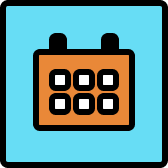Symmetry is one of the oldest design principles. From classical façades to modern floor plans, mirroring elements is a fast way to create balance, test alternatives, and reduce repetitive modeling. But until now, setting up mirrors in digital design tools has often been clunky, requiring workarounds, plugins, or manual duplication.
How it works in Arcol
The new Mirror Tool makes symmetry a first-class citizen in your design flow. Here’s how it works:
- Find the Mirror Tool in the Move/Rotate dropdown.
- Select the element you want to mirror (or skip this step if it’s already selected).
- Define your mirror plane by adding two points.
- Choose whether to mirror the original or create a mirrored copy by holding the copy hotkey.
For now, the mirror plane is aligned with the x/y plane, keeping things simple and predictable. We plan to extend this in the future so you can mirror across any plane.
Why it’s interesting
- Saves time: No more manually redrawing or rotating objects to achieve symmetry.
- Encourages iteration: Quickly test mirrored alternatives in massing, layouts, or assemblies.
- Works intuitively: The point-to-point workflow makes it easy to define a mirror plane without overthinking.
The impact
- Faster modeling: Architects and designers can achieve symmetry in seconds, cutting repetitive steps from their workflow.
- Cleaner models: By mirroring instead of duplicating, you reduce the chance of misaligned or inconsistent geometry.
- Design freedom: Experiment with mirrored variations early, when changes are cheap and ideas flow fastest.
The Mirror Tool may sound simple, but in practice it unlocks a more fluid way of working. Whether you are sketching early massing or refining detailed assemblies, mirroring helps you explore symmetry and balance without slowing down.






